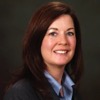With the emergence of new technology-based marketing tactics, some pundits have predicted the ultimate extinction of field-based pharma reps. Yet throughout the recent sales force “resizing” process, professional sales reps have continued to be crucial components of the biopharmaceutical marketing mix.
For example, in their 2013 publication reporting on the previous year’s pharmaceutical promotion spending, Cegedim Strategic Data reports that in the United States, “detailing” continues to dominate the promotional landscape, singlehandedly accounting for the majority (55%) of total expenditures. In fact, Cegedim notes that “studies have repeatedly shown that quality, face-to-face interaction with reps remains the essential element in any company’s success.”
Cegedim’s assessment was corroborated again recently by the JD Power and Associates 2013 Physician Manufacturer Experience Study – Oncology, released in April. In the report’s introductory press release, Rick Millard, senior director of the healthcare practice at JD Power and Associates, confirmed that, “physicians continue to value sales reps and to rely on them.” In fact, according to the report, “The relationship with sales reps is still what most influences physician satisfaction.”
Taken together, research and experience indicate that the life sciences sales profession remains on solid footing. But standing still won’t cut it; sales management leaders must continue to work to optimize the role of the sales force in today’s integrated marketing environment. Leaders should consider building their sales force deployment strategies around four foundational pillars: a blended team, true tactical integration, preference- and behavior-based promotion and macro/micro flexibility.
Blended Team
In the past, the “sales strategy” consisted of in-person details by a single field sales team or mirrored teams of traditional reps. Today, in contrast, successful marketers are seeing the benefits of a blended, cross-channel message delivery team. A blended team typically consists of some combination of several types of field-based and inside contact center representatives:
Core Primary, Specialty and Hospital Field Sales Teams
The foundation of most life sciences selling teams is a company- and brand-appropriate mix of field-based sales professionals targeting primary care physicians, specialty physicians and hospital-based physicians.
Flextime Sales Teams
These field-based sales professionals work a part-time schedule—usually 20 to 24 hours per week. Customarily highly experienced and accomplished life science sales professionals, they choose a flextime position for quality of life issues. Because of their commitment and expertise, flextime sales forces typically perform extremely well.
Hybrid Sales Teams
A newer type of representative, hybrid sales reps, have defined geographic territories but can reach healthcare professionals (HCPs) through each HCP’s preferred channel (face-to-face in field, live video, and/or phone) and at each HCP’s preferred time (including after hours and weekends). The hybrid rep concept blends the best of both worlds—a consistent, personal rep combined with the flexibility to time shift and communicate through both face-to-face and virtual channels.
Customer Service Teams
Field-based customer service reps offer HCPs and their practices support by providing starter samples, patient education materials, managed markets formulary info, etc. Customer service teams can stand alone (often seen when supporting established or mature products) or can be paired with field sales reps who both service and educate target HCPs and their office staffs.
Contact Center Sales and Service Teams
Many life sciences companies are augmenting their field sales teams with an array of inside message delivery teams:
- Live Video Detailing: Inside professional sales reps (with field-level training) conduct live, person-to-person details using the Web and phone.
- TeleDetailing: Experienced contact center sales reps use their advanced training to deliver key brand messages accurately to targeted prescribers.
- TeleService/TeleSampling: Remote/inside representatives make live phone calls to targeted offices, develop relationships, confirm sample needs, fax and retrieve sample request forms, and forward the requests to the client’s fulfillment supplier.
- Inside Credentialed Sales Specialists: Phone-based healthcare professionals (e.g., RPhs, PharmDs, RNs, MDs) engage physicians and other high-level targets in complex, one-on-one promotional product discussions.
- Vacant Territory and White Space Management: Companies using a variety of highly customizable vacancy management programs can use a combination of teleDetailing, teleService, teleSampling and eSampling.
Clinical Teams
Clinical teams are distinct from promotional sales and service teams and should be managed accordingly. The mission of clinical teams focuses on education of HCPs and patients with the goal of improving health outcomes. Well-designed teams of clinical health educators (CHEs) and medical science liaisons (MSLs) provide significant value to all key stakeholders and enhance the patient experience. Because clinical programs directly support the objectives of life sciences companies, they are often an integral element of the overall communications strategy.
Field Clinical Health Educators
Clinical health educators improve adherence, retention and health outcomes by educating HCPs, patients and caregivers. Field-based CHEs have become an essential support channel for many therapies that have self-administration and/or significant adherence issues (e.g., multiple sclerosis and diabetes therapies). Based on the significant impact that CHEs can have on patient adherence and health outcomes, they are also being deployed in other disease categories that have more traditional adherence issues.
Field Medical Science Liaisons
For many years, MSLs have played a key role in identifying and working closely with key opinion leaders (KOLs), facilitating the conduct of clinical trials and other educational support activities focused on thought leaders, clinical trial investigators, and other selected healthcare providers.
Additionally, CHEs and MSLs are playing an increasing role in the support and management of Risk Evaluation and Mitigation Strategy (REMS) programs.
Contact Center Clinical Teams
Many of the core activities of clinical teams can be accomplished remotely. For instance, inside MSLs (or field/inside hybrids) can expand reach, reduce travel, and save time. Likewise, inside CHEs can engage patients and HCPs by video, phone, text, chat and webinars, expanding reach in lower density MSAs. Finally, inside clinical health associates (CHAs) can staff an inside help desk or concierge service for medical appointments, appointment reminders and more. In addition, they manage routine issues and send questions to a credentialed clinical team member if and when needed. Of course, all clinical health team activity is conducted in strict compliance with legal and regulatory guidelines.
True Tactical Integration
Business silos are decidedly inefficient in today’s marketplace. Silo spanning—or silo busting, if you prefer—can deliver profound benefits in market penetration. Today, all promotional tactics must share an integrated platform consisting of three key elements:
1. Robust Sales Force Automation (SFA) system: There are many SFA systems available, including proprietary solutions, open source solutions, online or cloud-based solutions and licensed software solutions. Similarly, clinical teams should be provided a proven customer relationship management (CRM) software package—a sales-centric CRM package is not optimal. Regardless of the system(s) selected, the one indispensable ingredient to SFA and CRM success is that contacts with target physicians must be recorded correctly and consistently. The SFA system should also be capable of capturing the content and timing of each interaction across every channel to optimize scheduling and effectiveness.
2. Sophisticated Analytics: The backend integration system must be capable of linking all the SFA/CRM inputs from live target-MD interactions (field and inside) with all the company’s non-personal interactions with that same target (website interaction, online sample orders, web-conference attendance, etc.) to provide a 360-degree view of the customer. Every touchpoint must be captured and added to the interaction record. The analytics should be able to provide insights into customer channel preferences and response to communication efforts.
3. User-friendly Business Intelligence (BI) Front End: A BI front end is the access layer of the data mart that is used to deliver actionable information to users. The BI layer creates a user-appropriate view for each group of stakeholders, provides easy access to frequently needed data (usually including a dashboard), and enables users to tap into all previous interactions with target MDs in ways that guide future interactions.
Preference- and Behavior-based Promotion
Physician-targeted promotion should be responsive to MDs’ stated promotional preferences. Indeed, a concerted effort to provide this physician-specific, preference-based promotion is the driving force behind many of the emerging promotional adaptations, including live video detailing, off-hours inside representatives and hybrid sales teams.
However, promotion must also be centered on HCPs’ actual promotion-response behavior (behavior-based promotion). For companies that have achieved true tactical integration, the combined task may be most readily accomplished by capturing date-stamped prescribing data for any specific physician, then linking that data to a date-stamped record of all the promotional interactions with that same target. When this technique is employed, promotion-response patterns are usually easily identifiable.
Macro/Micro Flexibility
Real benefits can accrue to companies that implement blended teams, true tactical integration, and behavior-based as well as preference-based promotion. However, these benefits can emerge only if the messaging mix includes the flexibility to emphasize and de-emphasize various channels based on conditions on the ground. And the entire system must be able to flex on both a macro scale—that is, adjusting any tactic up or down across the entire system based on market conditions and its overall effectiveness—and also a micro scale, adjusting the messaging mix for each individual target physician based on his or her own specific promotion preferences and response.
Conclusion
Sales reps continue to be the anchor of HCP-targeted life sciences promotion. Yet despite this continued dominance, advanced strategies call for important changes to the ways that the sales force fits within a well-integrated sales and marketing plan. Going forward, marketplace success will depend on building a sales force deployment strategy around four foundational pillars: a blended team, true tactical integration, preference- and behavior-based promotion and macro/micro flexibility.





